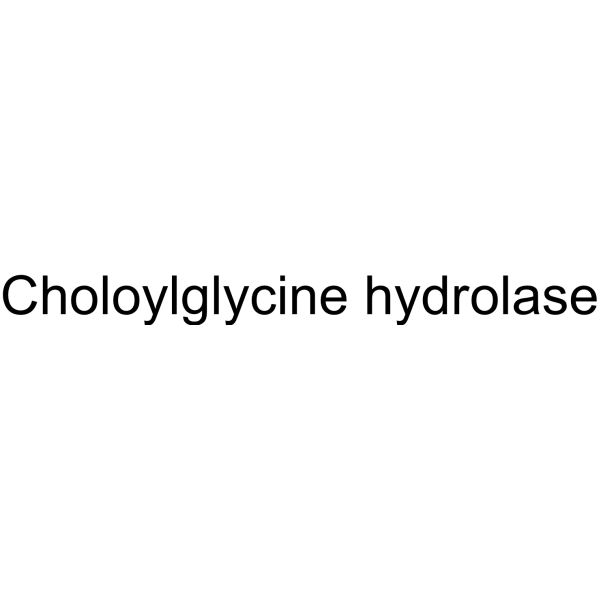Choloylglycine hydrolase

Choloylglycine hydrolase structure
|
Common Name | Choloylglycine hydrolase | ||
|---|---|---|---|---|
| CAS Number | 37289-07-9 | Molecular Weight | N/A | |
| Density | N/A | Boiling Point | N/A | |
| Molecular Formula | N/A | Melting Point | N/A | |
| MSDS | USA | Flash Point | N/A | |
|
Factors affecting adhesion of lactic acid bacteria to Caco-2 cells and inhibitory effect on infection of Salmonella typhimurium.
J. Microbiol. Biotechnol. 22(12) , 1731-9, (2012) In this study, seven strains isolated from mustard leaf kimchi were screened for their tolerance to simulated gastric and bile juices, the adhesive properties to Caco-2 cells, and the inhibition ability of Salmonella Typhimurium ATCC 29631 adhesion. Lactobaci... |
|
|
Relationships between fatty acid composition and bile tolerance in lactobacillus isolates from plants and from non-plant materials.
Can. J. Microbiol. 58(12) , 1396-404, (2012) Twenty plant-derived and 18 non-plant-derived strains of Lactobacillus casei were compared for their growth in tryptone - yeast extract - glucose broth containing 0.3% bile by measuring absorbance at a wavelength of 620 nm after 24 h of incubation at 37 °C. B... |
|
|
Importance of bacillithiol in the oxidative stress response of Staphylococcus aureus.
Infect. Immun. 82(1) , 316-32, (2014) In Staphylococcus aureus, the low-molecular-weight thiol called bacillithiol (BSH), together with cognate S-transferases, is believed to be the counterpart to the glutathione system of other organisms. To explore the physiological role of BSH in S. aureus, we... |
|
|
Characterization of the smallest dimeric bile salt hydrolase from a thermophile Brevibacillus sp.
Extremophiles 13(2) , 363-70, (2009) A thermophilic microorganism producing bile salt hydrolase was isolated from hot water springs, Pali, Maharashtra, India. This microorganism was identified as Brevibacillus sp. by 16S rDNA sequencing. Bile salt hydrolase (BSH) was purified to homogeneity from... |
|
|
Identification and characterization of a bile salt hydrolase from Lactobacillus salivarius for development of novel alternatives to antibiotic growth promoters.
Appl. Environ. Microbiol. 78(24) , 8795-802, (2012) Antibiotic growth promoters (AGPs) have been used as feed additives to improve average body weight gain and feed efficiency in food animals for more than 5 decades. However, there is a worldwide trend to limit AGP use to protect food safety and public health,... |
|
|
Probiotic bile salt hydrolase: current developments and perspectives.
Appl. Biochem. Biotechnol. 162(1) , 166-80, (2010) Probiotic has modernized the current dietetic sense with novel therapeutic and nutritional benefits to the consumers. The presence of bile salt hydrolase (BSH) in probiotics renders them more tolerant to bile salts, which also helps to reduce the blood choles... |
|
|
Effects of Lactobacillus acidophilus on gut microflora metabolic biomarkers in fed and fasted rats.
Clin. Nutr. 28(3) , 318-24, (2009) Little is known about fasting effects on gut bacterial metabolism. As probiotics are purported to be beneficial for health, this study aimed to investigate the response of gut microbial metabolism on fasting with or without probiotic administration.Sixty male... |
|
|
Molecular characterization of native isolates of lactic acid bacteria, bifidobacteria and yeasts for beneficial attributes.
Appl. Microbiol. Biotechnol. 83(6) , 1115-26, (2009) In a changing scenario of food habits being associated with wellness factors through the concepts of probiotics and prebiotics, an attempt has been made to characterize on molecular basis, the desirable benefits associated with natural isolates of lactic acid... |
|
|
Characterization of the cholesterol-reducing activity in a cell-free supernatant of Lactobacillus acidophilus ATCC 43121.
Biosci. Biotechnol. Biochem. 72(6) , 1483-90, (2008) This study characterizes the factors responsible for the cholesterol reduction by Lactobacillus acidophilus ATCC 43121. In addition, two-dimensional gel electrophoresis (2-DE) and protein profiling was also used to study the response of ATCC 43121 at the prot... |
|
|
All 4 bile salt hydrolase proteins are responsible for the hydrolysis activity in Lactobacillus plantarum ST-III.
J. Food Sci. 76(9) , M622-8, (2011) In vertebrates, bile salt hydrolysis plays an essential role in fat metabolism. Bile salts are synthesized in the liver. And in the small intestine glycine and taurine are de-conjugated from bile salts by the enzyme bile salt hydrolase (BSH) from intestinal m... |